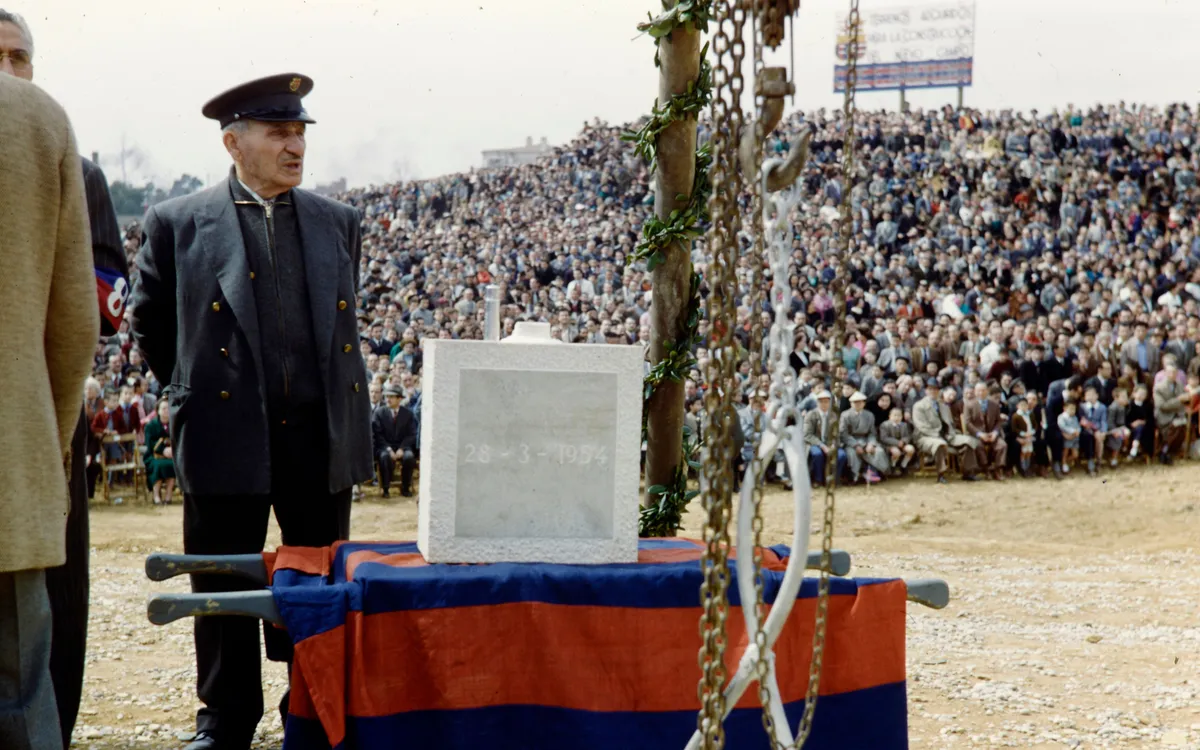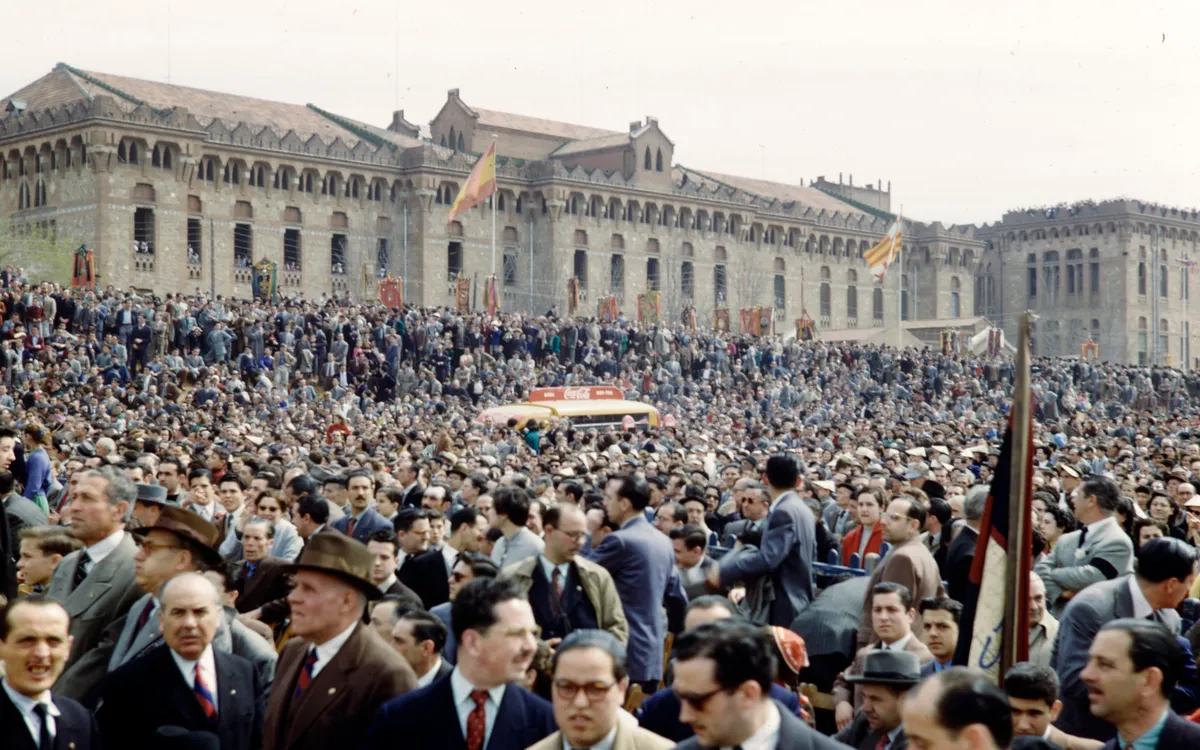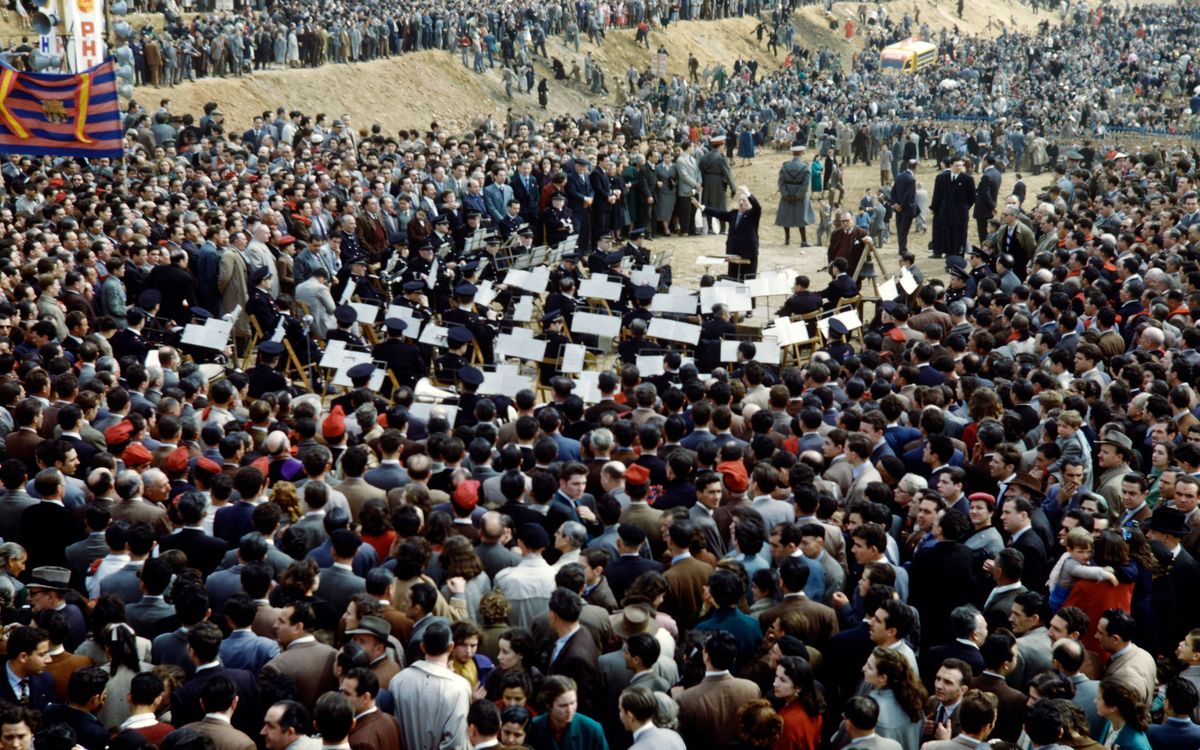Seventy years since the first stone laid at Camp Nou
- Viber
- Messenger
- Copy link
Towards the end of the 1940s it had become clear that the 48,000 seats at the Les Corts stadium weren't enough to house the growing blaugrana masses, motivated by the fantastic side featuring Velasco, Calvet, Seguer, the Gonzalvo brothers, Basora and César, led by Uruguay coach Enrique Fernández. As the Les Corts stadium couldn't be expanded any further, the blaugrana members approved the purchase of some land to build a new stadium in December 1950, which was close to the old stadium and next to the Maternidad building. After a few years of impasse, the appointment of Francesc Miró-Sans as Club President in November 1953 finally moved the hot topic of the new stadium's construction forward, as there could be no further delays.
Finally, at 11am on Sunday 28 March 1954, the first stone of the future Camp Nou for FC Barcelona was laid, with an estimated 60,000 FC Barcelona fans amazingly watching on. As was the norm during the National Catholicism period, the stone was solemnly blessed first by the archbishop of Barcelona, Gregorio Modrego.

The same stone as at the Les Corts stadium
The Stadium's first stone was carried from the Les Corts pitch by the FC Barcelona supporters clubs Círculo Barcelonista, Peña Solera, Peña Azulgrana, Peña Gol de Dalt, Peña Cinco Copas, Peña Ramallets and Peña Victoria, along with the 'FC Barcelona former players association’. The event was livened up by over three thousand members of the Cors de Clavé, accompanied by the Barcelona Municipal Band, who gave a rendition of popular tunes.
Curiously, that first stone at the future Camp Nou was the same one laid on 19 February 1922 when construction of the old Les Corts stadium was begun. The reason for this goes back to 1929, when it was decided to lower the level of the pitch at Les Corts. The hard-working and multi-faceted groundsman Manuel Torres set to work and soon came across a hard object, which turned out to be the first stone laid at the ground. Not knowing what to do with it, he decided to keep it safe. In 1954, the Camp Nou Commission were looking for a symbolic stone, and they asked Torres if he knew where the first stone laid at the Les Corts stadium was. The groundsman said he had it stored away. So, just by chance, that year saw the first stone for Camp Nou laid for the second time as part of an FC Barcelona stadium.

The 1954 to 1957 period
The importance of that memorable day was captured by the words of Carme Trias de Bes, who wrote in the El Correo Catalán newspaper the following day, “Twenty, thirty years will have gone by, and every time a first stone is laid in our city, thousands of Barcelona residents who celebrated the stone laid yesterday, Sunday, with such acclaim, will remember it. This is a date that will live long in the memory of members and followers of the historic club.”
However, as can be read in the April 1954 edition of the FC Barcelona Official Newsletter, the party atmosphere had to cede for the work to be done, “No one is going to give us our stadium for nothing. it will be ours, and as such, we have to build it. Party over and euphoria apart, it's time to be practical and make sacrifices. It's time to move on from words to actions. And that's why we count on our people and... those yet to come”.
With the blaugrana fans expectant day on day, construction work began on new stadium at a good pace on land that used to be occupied by shantytowns. The new imposing Camp Nou was finally inaugurated on 24 September 1957 with an initial capacity of 99,000 spectators, double the size of the Les Corts stadium, and it would go on to become the new home for all things FC Barcelona. The gateway to the future was opened on that Mercè public holiday.
- Viber
- Messenger
- Copy link

